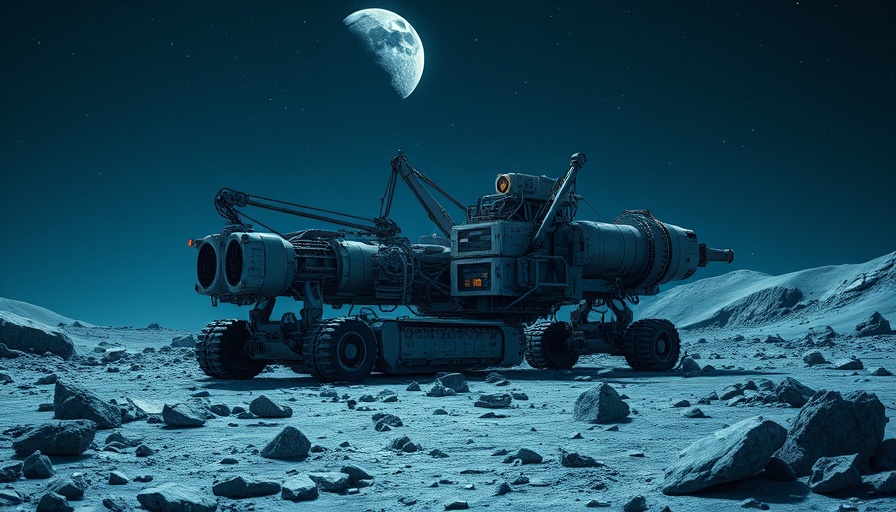
Unveiling the Lunar Vision: Vermeer and Interlune's Innovations
The dream of harvesting resources from the Moon is no longer confined to science fiction. Recent developments from Vermeer and Seattle's Interlune mark a monumental leap towards creating a workforce of autonomous technology in space. The teams have unveiled a full-size prototype of a lunar excavator specifically designed to dig up to 100 metric tons of lunar soil, or regolith, per hour—all in pursuit of helium-3, a non-radioactive isotope that could redefine energy sustainability and computing power.
The Mechanism of Change: How the Lunar Excavator Works
Unlike traditional earth-moving equipment, the Interlune Harvester functions more like a trencher, a design specialty of Vermeer. This innovative machine continuously ingests, processes, and returns moon dirt to the surface without interruption. What sets it apart? Its reduced power consumption, minimized dust disturbance, and optimized weight for efficient transport to the Moon—a crucial factor given the prohibitively high expense associated with launching equipment into space.
Why Helium-3? The Promise of a Sustainable Fuel
Helium-3 is garnering attention due to its potential applications in quantum computing and clean fusion energy, making it an attractive target for commercial space exploration. Currently, helium-3 is heavily dependent on the decay of tritium, a component of nuclear warheads, leading to a scarcity that has spiked auction prices on Earth. Interlune’s agreement with the Department of Energy (DOE) to deliver helium-3 by April 2029 underscores the increasing importance and potential profitability of lunar resources.
Future Opportunities: A New Era of Space Resources
The implications of successfully harvesting helium-3 extend beyond academic curiosity. Interlune aims to normalize the commercialization of outer space resources, creating a new frontier for industries back on Earth. As they prepare to process enough lunar soil to fill a large swimming pool to obtain just three liters of helium-3, the path ahead is brimming with possibilities for profit and technological advancement.
Challenges Ahead: What Lies in the Path of Space Excavation
Despite the excitement surrounding lunar resource extraction, formidable challenges remain. The technology must ensure effective soil sorting and extracting desired gas mixtures—all while maintaining the integrity of the excavation process. Furthermore, obtaining helium-3 requires advanced low-temperature separation techniques that have yet to be developed for space environments.
Community Impact: What This Means for Future Generations
The commercial quest for lunar resources is a powerful story of innovation and ambition. As we edge closer to making these projects a reality, the potential benefits extend to numerous sectors—energy, technology, and even education. This endeavor sparks imaginations and opens up exciting pathways for future engineers and scientists. Lunar excavation could inspire an entire generation to consider careers in STEM fields, bridging the gap between present capabilities and forthcoming realities.
A Call to Action: Embrace the Future of Space Resources
Investing in technologies for lunar excavation is not just about energy—it’s about envisioning the potential for growth and advancement in the unknown realms beyond our planet. As we step forward into this new era, we encourage readers to explore and support initiatives that empower innovation in the space industry. Your engagement today could spark the ideas of tomorrow, pushing the boundaries of what’s possible.
 Add Row
Add Row  Add
Add 






Write A Comment